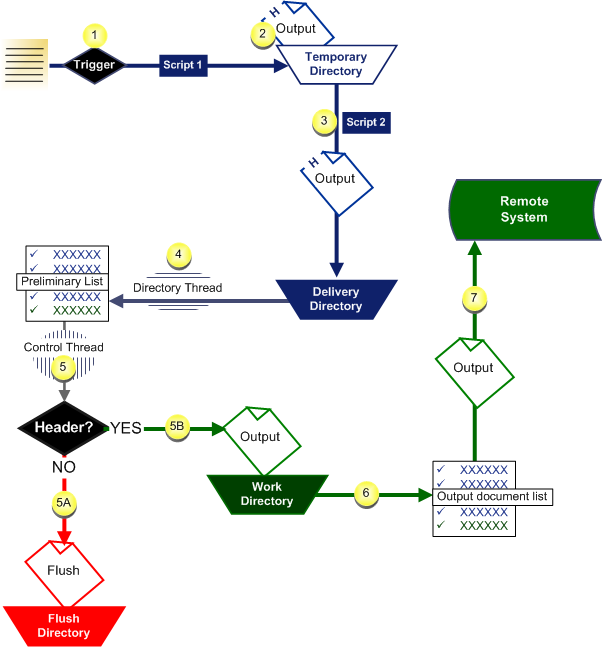Document Delivery Data Flow Overview
- A file triggers a CIMPLICITY script that creates an output document with a header from the file.
- The output document is sent to a temporary directory.
- A CIMPLICITY script copies the output document from the temporary to the delivery directory.
- A directory thread adds the new document to a preliminary output list.
- A control thread checks each file in the preliminary output list to see if it has the required header.
- If the file does not have the required header, an audit message is generated. The file is then moved to the flush directory.
- When an output document is found that does have a valid header, a file without the header is copied into the work directory.
- The control function sends the filename to an Output Document list.
- The document is delivered to a remote system.
Note: Details about delivery to the remote system are based on the existing conditions static to the
delivery method.





